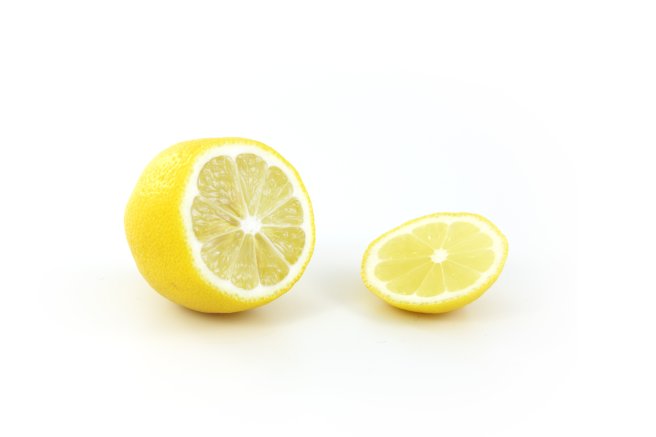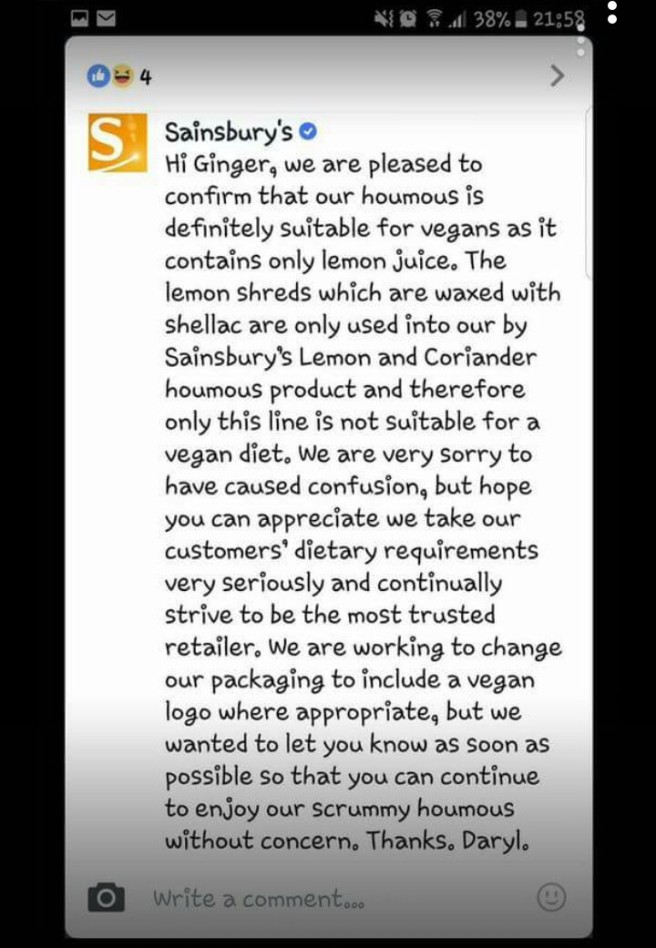
The Sainsbury’s hummus horror
The news that Sainsbury’s hummus is longer vegan shook the world of social media – well vegan social media anyway. Then the news that is was – well most of it anyway, made everybody calm down – except those who still don’t know….
Sainsbury’s response on Facebook now suggests it actually vegan is – except for the Lemon and Corriander variety and the “vegan” stamp is being restored.
Apparently, the hummus only contains lemon JUICE – not bits – the response doesn’t say whether waxed lemons are used for the juice – I’m guessing, and hoping, not.

The rest of the world asked “how can hummus not be vegan?” And what caused the anger in the first place? Well the world of shellac is still worth exploring…
Anything is possibly in these days of perfect fruit…
So what is shellac? And What’s it got to do with lemons?
One word – bug juice.
Shellac is secreted by lac bugs on trees in India and Thailand. People scrape it off trees and use it to polish wood – or citrus fruit– I kid you not.
It is used on fruits to prolong its shelf life and has also been used to coat sweets and pills. It has an additive number of E904.
And Sainsbury’s were said to have removed the vegan stamp from their hummus because the lemon juice it contains itself contained shellac.
So, how come shellac isn’t vegan?
Many will argue that any product taken from living beings of other species is not ours, and therefore, it shouldn’t be used by vegans.
Thought Co’s website ( https://www.thoughtco.com/how-is-shellac-not-vegan-127609 ) expands on this: “The beetles secrete the resin on tree branches in Southeast Asia as a protective shell for their larvae. The males fly away, but the females stay behind. When the flakes of resin are scraped off the branches, many of the females who remain are killed or injured. Some branches are kept intact so that enough females will live to reproduce.”
According to an article by Ramesh Singh, Department of Zoology at Udai Pratap Autonomous College in India ( http://www.vrg.org/blog/2010/11/30/q-a-on-shellac/ ), 300,000 lac insects are killed for every kilogram (2.2 lbs.) of lac resin produced.
In other words, it not only puts the bugs’ larvae at risk, it also kills many of the bugs – so, definitely not vegan then.
But what has this got to do with supermarket hummus? Basically, they’re using lemons coated with shellac to provide the lemon juice for the hummus, as the lemons now contain an animal product, this means the hummus is no longer vegan. In fact, some may argue, it is not even vegetarian.
The mainfact to consider is that most citrus fruit sold in UK supermarkets is coated with shellac – it’s used in nail polishes too, incidentally.
In other words, it’s a hidden ingredient that is found in the most unlikely of places – even in hummus – sometimes. It does bring into question the morals of supermarkets – the number of vegans is growing, and so are the number of vegan products available – so does it really pay them to “unveganise” some of their products? Why coat apples and lemons in bug juice? Is a few days of extra shelf life or a glowing Cox really worth it?
But, those who use nail varnish seem to be most at risk of having shellac in their cabinet at home.
Of course, there are other places to find hummus, soit gives meand excuse to tell you how you can make your own. Here’s the recipe I’ve used:
For the recipe I use, you need:
200gm cooked chickpeas (about one drained can)
2 Tablespoons of light tahini
2 Tablespoons of lemon juice
1 Table spoon of olive oil
2 Tablespoon of water
Some garlic (powder or a clove or 2 crushed – depending on taste)
Black pepper.
Paprika
If you’re using a blender, simply blend the lot together (excluding the paprika) – adding more oil of water if you want it thinner or creamier. If you don’t have a blender, mash the chickpeas until they are completely creamed and mix in the other ingredients (again, excluding the paprika). You can then sprinkle the paprika on top to make it look even more appetising – maybe mix it with a little olive oil first to give it an extra twist. You can even put aside a couple of whole chickpeas to use as decoration if you’re serving it to others.
As I mentioned above, you can experiment by using different oils and flavour combinations – why not caramelize some onions and mix that in? To do this, simple slow cook the onions in a little olive oil. It adds a great flavour to your hummus, I promise.
Alternatively, you could try mashing up some broad beans or peas to add some greenery. For some of these combinations you may need to add a little more water or oil to prevent the hummus from becoming too thick – but some people like it thick, it must be said. The recipe is just a rough guideline, experiments with quantities so you get the right taste and consistency for you. And, of course, why you dip in it is down to you – celery, carrot, crisps… I also use it instead of marg in sandwiches sometimes.

